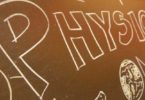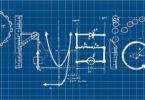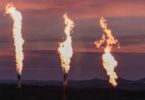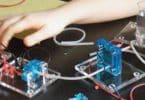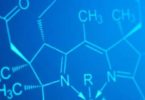How many bones in the adult human body?
(a) 206
(b) 207
(c) 208
(d) 209
Which of the following statements about the tongue is true?
(a) The tongue is the strongest muscle in the human body.
(b) Taste buds are only located on the surface of the tongue.
(c) The tongue is primarily composed of bone tissue.
(d) The average human tongue has approximately 10,000 taste buds.
Where is a levator palpebrae superioris muscle in the body?
(a) Attached to the upper eyelid
(b) In the shoulder
(c) Around the sides of the nose
(d) Behind the patella in the knee
‘Duodenum’ is a part of:
(a) Brain
(b) Intestine
(c) Liver
(d) Lungs
Related: Histology test questions and answers
CAT Scanning is used for diagnostics of the body using X-ray, CAT mean
(a) Computerized Axis Tomography
(b) Computer Axial Toxography
(c) Control Acid Tomography
(d) Computerized Axial Tomography
What is the normal temperature of the human body?
(a) 30o C
(b) 37o C
(c) 98o C
(d) 97o C
About 70% of our energy requirements should be met by _
(a) Amino acids
(b) Fats
(c) Lipids
(d) Carbohydrates
What is produced from the pancreas?
(a) Insulin
(b) Bile
(c) Blood
(d) Urine
Reproductive cells in human beings are produced
(a) in greater numbers for a longer period of time in the male
(b) for a longer period in the female than in male
(c) in equal numbers of both sexes
(d) in greater numbers by the female than by the male
Related: Biology general science questions and answers
where is the smallest bone in the human body?
(a) chest
(b) brain
(c) left nose
(d) middle ear
In a normal human being, how much time does food take to reach the end of the intestine for complete absorption?
(a) About 8 hours
(b) About 12 hours
(c) About 16 hours
(d) About 18 hours
The most abundant protein in the human body is
(a) Fibrinogen
(b) Retculin
(c) Prothrombin
(d) Collagen
Kidney stones are mainly formed by which of the following compounds
(a) Calcium Silicate
(b) Calcium Oxalate
(c) Calcium Chloride
(d) Calcium Oxide
Related: Digestive system questions and answers
A theory of the workings of the human body adopted by Greek and Roman physicians and believed until the 19th century was that it was filled with 4 basic substances (black bile, yellow bile, phlegm, and blood). These were collectively known as what?
(a) Japes
(b) Jokes
(c) Jests
(d) Humors
On which part of the human-eye is the image formed?
(a) Retina
(b) Cornea
(c) Optic nerve
(d) Iris
Which of the following statements about the human tongue is true?
(a) The tongue is primarily responsible for producing saliva.
(b) Taste buds are located only on the surface of the tongue.
(c) The tongue is divided into four distinct regions called papillae.
(d) The tongue is essential for both tasting and speech.
Which of the following is not a hormone?
(a) Insulin
(b) Adrenalin
(c) Thyroxin
(d) Hemoglobin
Alveoli are found in which part of the body?
(a) Kidneys
(b) Liver
(c) Heart
(d) Lungs
What is the largest part of the human brain?
(a) Mid brain
(b) Medulla Oblongata
(c) Cerebrum
(d) Cerebellum
Related: easy Chemistry questions
What is the longest bone in the human body?
(a) Tibia
(b) Femur
(c) Fibula
(d) Humerus
What is the second largest organ in the human body, located under the diaphragm on the right-hand side?
(a) Liver
(b) Heart
(c) Spleen
(d) Lung
What is a tabor?
(a) A small drum with a long narrow body
(b) An African reptile
(c) end of large intestine
(d) strongest bone of the human body
The largest organ of the human body is.
(a) Brain
(b) Heart
(c) Skin
(d) Liver
How many cells are in the human body?
(a) 30 trillion
(b) 37 trillion
(c) 40 trillion
(d) 47 trillion
Related: questions about Mammals
What is a localized, blood-filled dilation of a blood vessel caused by disease or weakening of the vessel wall, which most commonly occurs in arteries at the base of the brain and in the aorta?
(a) Aneurism
(b) Eczema
(c) Allergy
(d) Alopecia
People who do hard manual work with their hands are likely to develop
(a) Thick subcutaneous fat in their palms
(b) Thick epidermis on their palms
(c) Greater number of sweat pores in their hands
(d) Greater quantity of melanin all over the body
The main function of a skeleton is
(a) To cover up the organs
(b) To give a definite shape to the body
(c) To form red blood corpuscles
(d) All the above
Where the tibia and fibula are found in the human body?
(a) Arm
(b) Lower leg
(c) Ribcage
(d) Fingers
Related: Glycolysis questions
Wharton’s Jelly is the gelatinous liquid found where?
(a) in the outer layer of the heart
(b) in an umbilical cord
(c) with Liver’s bile juice
(d) in the small intestine
Where are the palatine bones?
(a) Mouth
(b) Spine
(c) Leg
(d) Arm
On the Kelvin scale, the normal temperature of the human body is
(a) 290
(b) 310
(c) 300
(d) 30
Which organ of the human body has the largest number of bones?
(a) Fingers
(b) Brain
(c) Chest
How is the Body Mass Index (BMI) calculated?
(a) Weight related to age
(b) Girth of the upper arm related to age
(c) Weight related to height
(d) Weight of the upper arm related to height
Related: Genetic Engineering questions
Gastric” applies to which part of the body?
(a) Hand
(b) Head
(c) Stomach
(d) Foot
What is the longest and widest single nerve in the human body?
(a) Sciatic nerve
(b) Lateral femoral cutaneous nerve
(c) Optic nerve
(d) Saphenous nerve
The number of chromosomes in the nuclei of human beings is
(a) 44
(b) 48
(c) 46
(d) 23
The abundantly found element in the human body is
(a) Nitrogen
(b) Iron
(c) Oxygen
(d) Carbon
Which of the following is not an essential function of the skin in the human body?
(a) protects the internal organs of the body
(b) acts as a sensory organ
(c) regulates the temperature of the body
(d) gives shape to the body
Related: ohm’s law mcq
Cholesterol is related to
(a) Fats
(b) Starch
(c) Proteins
(d) Minerals
Myopia is connected with
(a) ears
(b) eyes
(c) lungs
The molecule used by humans for long term energy storage is
(a) vitamin
(b) fat
(c) cholesterol
(d) roughage
Pepsin digests
(a) proteins in the stomach
(b) carbohydrates in the mouth
(c) fats in duodenum
(d) minerals in ileum
Which is good cholesterol:
(a) LDL
(b) HDL
(c) VLDL
(d) Chylomicron
Related: The Sun quiz
The essential ion for muscle contraction is
(a) Sodium
(b) Chloride
(c) Potassium
(d) Calcium
The most essential part related to hearing is
(a) Pinna
(b) Ear drum
(c) Auditory ossicles
(d) Membranous labyrinth
The lower window in the inner ear is called
(a) Oval window
(b) Round window
(c) Square window
(d) Conical window
Vestigial organ in human beings is
(a) Skin
(b) Eyes
(c) Appendix
(d) All
Removal of spleen will lead to
(a) Decrease in antibody formation
(b) Increase in RBC production
(c) Decrease in platelet formation
(d) Decrease in plasma formation
Related: alkane chemistry questions
Nastic movements differ from tropic movements in being
(a) Controlled by chemicals
(b) Controlled by turgor pressure
(c) Directional with respect to stimulus
(d) Non-directional with respect to stimulus
The largest organ of the body in surface area and weight is
(a) Skeleton
(b) Muscles
(c) Skin
(d) CNS
The same hormone can be known by various names given in which set
(a) Secretin, enterokinin gastrin
(b) Gametokinetic factor, testosterone, LTH
(c) ADH, pitressin and vasopressin
(d) Oxytocin, tri-iodo-thyroxine, Thyroxine
There are two windows between the middle & internal ears of Man. They are called
(a) Fenestra ovalis and fenestra vestibule
(b) Fenestra ovalis & fenestra rotunda
(c) Fenestra rotunda & fenestra tympani
(d) Fenestra ovalis & tympanic membrane
Gonadotropic hormone is produced in
(a) Intersitial cells of testis
(b) Adrenal cortex
(c) Adenohypophysis
(d) Posterior part of Thyroid
Related: medical questions and answers
Hormone which changes glucose into glycogen is produced by
(a) Pituitary
(b) Thymus
(c) Parathyroid
(d) Pancreas
The hyosecretion of pituitary hormone causes
(a) Cretinism
(b) Diabetes insipidus
(c) Goitre
(d) Daibetes mellitus
Which set includes all the vestigial structures of man?
(a) Ear muscle, atlas vertebra, body hair
(b) Coccyx, wisdom teeth, patella
(c) Coccyx, wisdom teeth, ear muscle
(d) Vermiform appendix, body hair
Water deficit in the body increases the concentration of:
(a) Potassium
(b) Insulin
(c) Sugar
(d) Sodium
(e) Glucose
What hairs are the last to lose their color with age?
(a) Mustache
(b) Beard
(c) Hair
(d) Eyelashes

